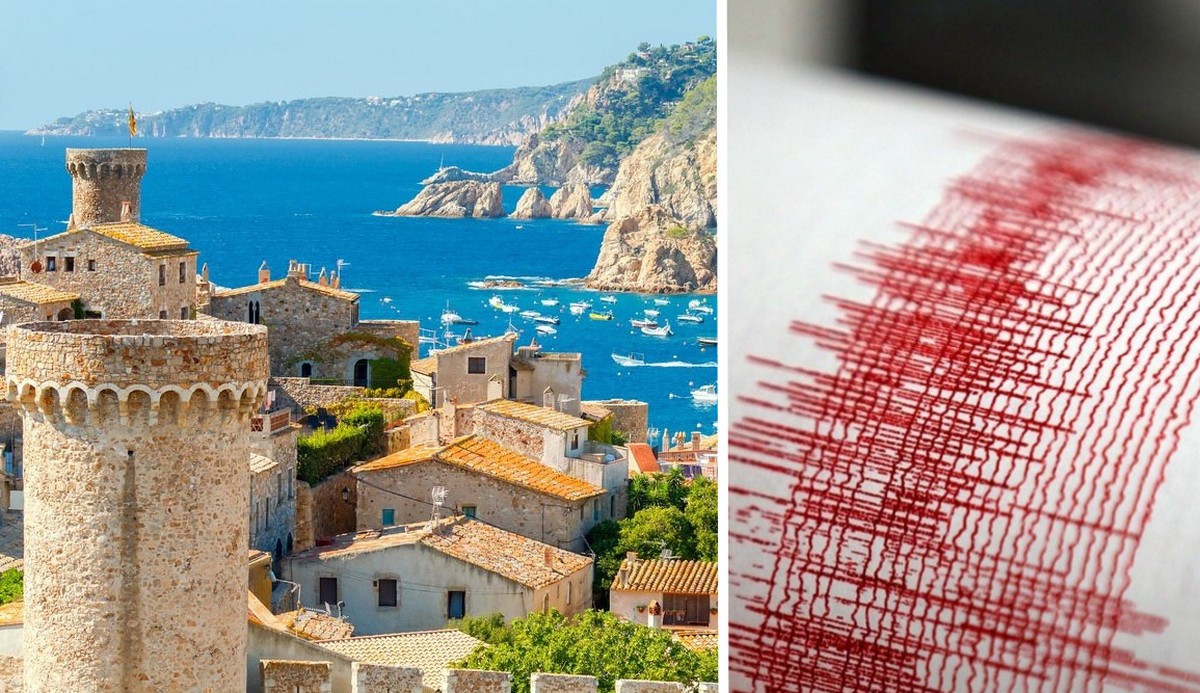In six days, from February 25 to March 3, as many as 103 earthquakes occurred in the Canary Islands. The strongest of them happened off the coast of Tenerife. During this time, foreign tourists and residents have repeatedly experienced the horror of what is happening, fearing a repeat of a powerful volcanic eruption that occurred last year on the island of La Palma, which is also part of the Canary Islands. According to Spanish media, citing the Canary Islands Volcanic Institute, many underground tsunamis released seismic energy equal to the amount of electricity needed to power the island of the small resort island of El Hierro, which is part of the same.
The strongest earthquake with a magnitude of 2.6 on the Richter scale occurred 30 km off the north coast of the popular island of Tenerife on Tuesday, March 1. Despite the earthquakes, the level of volcanic alarm on the islands of Tenerife, Lanzarote, Gran Canaria and El Hierro remains at a green level, which means that tourists and locals are still safe.
Almost three months after the eruption of La Palma, geophysical and geochemical parameters have not returned to normal, experts said, so its “volcanic traffic light” is still yellow. This means that residents and visitors to the island must continue to be guided by messages sent by civil protection, as there is still a possibility of increased seismic activity.
According to experts, the Canary Islands are prone to moderate tectonic activity, but some earthquakes have been recorded along active seismic faults, such as the fault between the famous resort islands of Tenerife and Gran Canaria.
In terms of gas emissions, with the exception of La Palma, where abnormal carbon dioxide (CO2) emissions continue to be recorded, the Canary Geochemical Network reflects the relatively higher value of volcanic gas emissions recorded in Tenerife, where in 2016 a process of increasing hydro pressure was recorded. systems. However, they noted that this process is normal for active volcanic systems and does not involve the possibility of volcanic eruptions in the short or medium term.
It will be recalled that the eruption of La Palma volcano caused huge damage and destroyed more than 1,000 houses. It has also ruined banana plantations and major infrastructure: roads and vehicles.
Some tourism officials on the island have urged tourists not to be afraid and return to support the local economy. The bravest of them visited the islands as part of a volcanic tour, where they watched the eruption of the volcano and the spreading lava from a safe distance, read more in the article “Volcanic tourism flourished in the Canary Islands: everything is killed, there are no places.”
Volcanic tourism is not for everyone. This is a controversial area of recreation, as some experts believe that tourists by their visits show disrespect for people affected by the eruption. Others see it as a way to revitalize the tourism economy and bring travelers back to the island. And others generally understand the desire of volcanophiles to see a gurgling volcano and feel the pulsation of its heat – so they get an extreme experience of interaction with the natural elements.
Volcanic tourism is not without dangers. So, in 2019, during a volcanic eruption on White Island in New Zealand caught several dozen tourists who were there. 22 people died.
For reference and ease of understanding, we present a system of volcanic danger, expressed in colors:
Green: At this level, it is important to follow the information provided by the authorities. This maintains a normal rhythm of life for tourists and locals.
Yellow: the volcano may become the most dangerous in the near future. Experts are monitoring its growing activity. At this stage, it is recommended to have a small backpack ready in case of an emergency evacuation and to monitor information from the authorities.
Red color: time of evacuation of residents and guests of the region, as the eruption is about to begin or has already begun. It is important to remain calm in order to be able to strictly follow the relevant instructions and go to the designated point for evacuation.
For those who care about a healthy lifestyle, we recommend reading: “Scientists have found a tree whose decoction of the bark destroys the coronavirus.”

